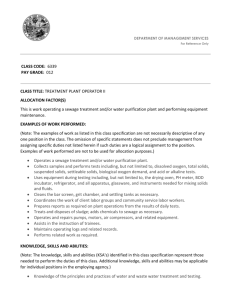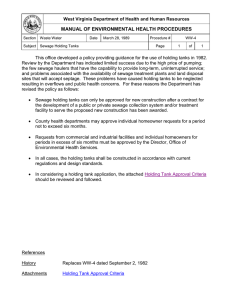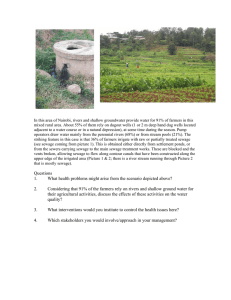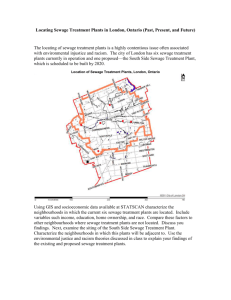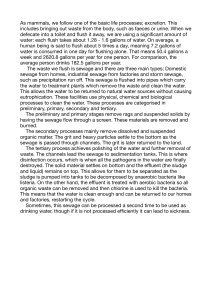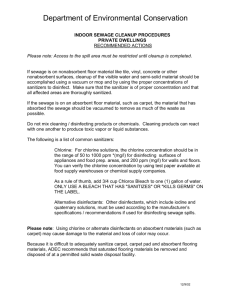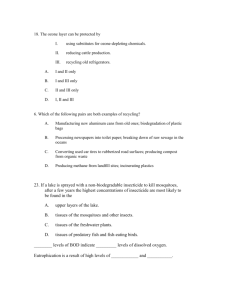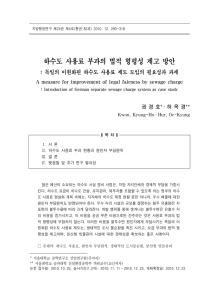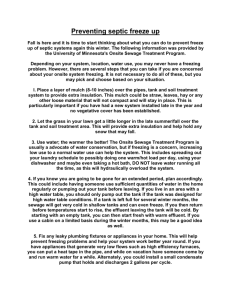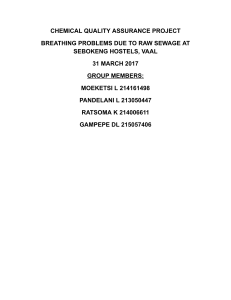Water Treatment and Disposal
advertisement
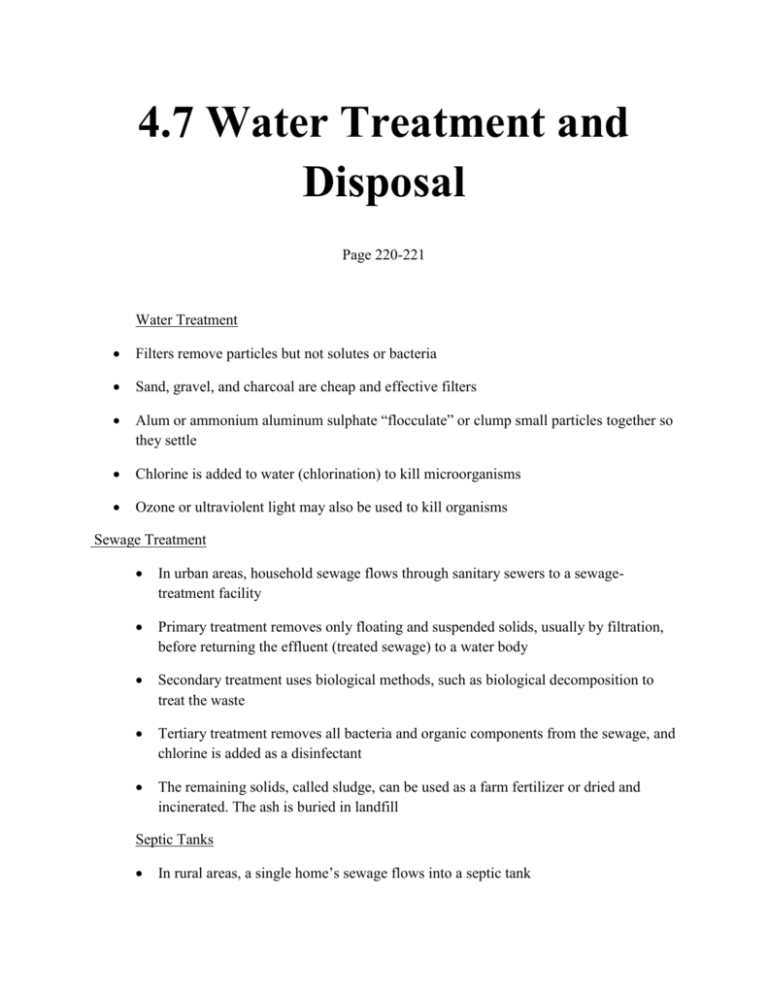
4.7 Water Treatment and Disposal Page 220-221 Water Treatment Filters remove particles but not solutes or bacteria Sand, gravel, and charcoal are cheap and effective filters Alum or ammonium aluminum sulphate “flocculate” or clump small particles together so they settle Chlorine is added to water (chlorination) to kill microorganisms Ozone or ultraviolent light may also be used to kill organisms Sewage Treatment In urban areas, household sewage flows through sanitary sewers to a sewagetreatment facility Primary treatment removes only floating and suspended solids, usually by filtration, before returning the effluent (treated sewage) to a water body Secondary treatment uses biological methods, such as biological decomposition to treat the waste Tertiary treatment removes all bacteria and organic components from the sewage, and chlorine is added as a disinfectant The remaining solids, called sludge, can be used as a farm fertilizer or dried and incinerated. The ash is buried in landfill Septic Tanks In rural areas, a single home’s sewage flows into a septic tank Solids settle on the bottom of the tank or are degraded by bacteria Overflow wastewater flows away from the tank in “weeping tiles” and filters though the soil to the ground water Page 221 # 1, 3, 4, 5
